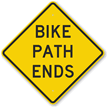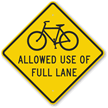Protection measures increase with urban biking
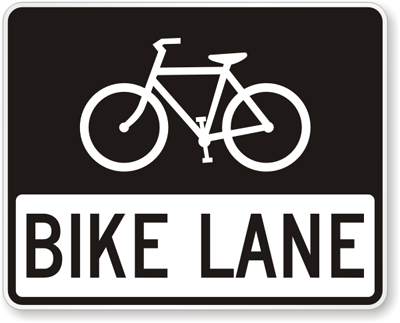
Signs like the one above keep cyclists safe and promote a bike-friendly environment. (Via BicycleSigns.com)
June 14, 2012 — Despite the changing demands of urban life, one aspect has seemed to consistently thrive: bike riding. Despite navigating dangerously congested traffic and among hustling crowds, urban bike riders are still determined to pedal their way around. In fact, bike usage has increased dramatically in big urban cities. While bike riding across the US has risen 39% since 2001, in the 70 largest cities, bike use has increased by 63%.
People have found it more worthwhile to hop on a bicycle rather than getting behind the wheel or using mass transit. Most likely, bicycling has become a more popular avenue of alternative travel in light of high gas prices and a desperate chance to avoid unreliable and at times, uncomfortable public transit (NYC subways anyone?). Meanwhile, cities like New York have responded accordingly, adding bike lanes to their roads.
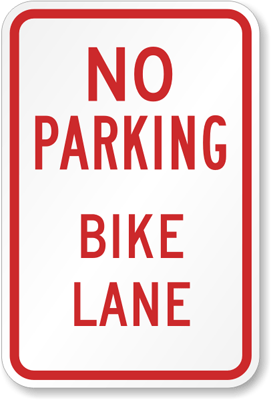
Cities have responded to the growth in cycling by providing more car-free bike lanes. (via MyParkingSign.com)
Unfortunately, increased bike use has also been met with ever increasing rates of bike theft: hundreds of thousands of bicycles are stolen in the United States each year. In 2010, close to 900,000 bikes were stolen, at an estimated loss of $315 million.
Not surprisingly, many of the top bike-friendly cities are also the ones with the highest theft rate. Cities such as Portland, Chicago, San Francisco, New York, and Tucson are consistently featured both in the top-ten lists of most bike-friendly cities, and cities notorious for high bike theft rates. Even with improvements in anti-theft locks and bike security awareness campaigns, bike theft has only increased in recent years.
When police officers find bikes, they first attempt to identify the bike’s owner via serial number or registration. Often, however, no identification can be found and the bike remains impounded, ultimately auctioned off, scrapped, or claimed by the department. At the same time, police cannot charge bike thieves if they cannot prove that they are not the stolen bikes’ rightful owners.
To ensure the speedy recovery of stolen bikes, bike registries like BikeGuard work to identify bikes and bike owners using registration numbers and accompanying asset tags. The combination of the national bike registry and the ID tags also acts as a theft deterrent, signalling to would-be thieves that this stolen property could be easily traced to a rightful owner.
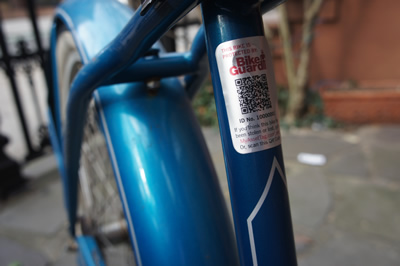 A bike emblazoned with the BikeGuard tag. (via MyAssetTag.com)
A bike emblazoned with the BikeGuard tag. (via MyAssetTag.com)
There are many benefits to having a population that bike rides. Cycling creates a healthier, greener, and less congested environment. This upward trend will only increase with more bike safety — and protection — measures in place.
– N. Gilliat












